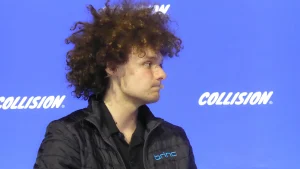How Is This City in China Leading Global Tech Innovation Over the U.S.?
Let’s start with a joke – here’s how Hangzhou divides the labor: DeepSeek tackles the mental work, Unitree Robotics handles the physical labor, and Game Science is responsible for figuring out what humans should do next.
While this is said in jest, it cleverly highlights the unique status and influence of companies including DeepSeek, Unitree Robotics, Deep Robotics, ManyCore, Brian Co and Game Science—recently dubbed by netizens as the “Hangzhou Six Tigers.”
At the ZhiJiang Laboratory on KeChuang Avenue in Yuhang District, Hangzhou, intelligent supercomputing is merging with quantum science, powered by the new-generation Sunway supercomputer. This fusion is evolving into the Sunway Quantum Simulator, embodying an endless pursuit of computational power to drive boundless scientific exploration.
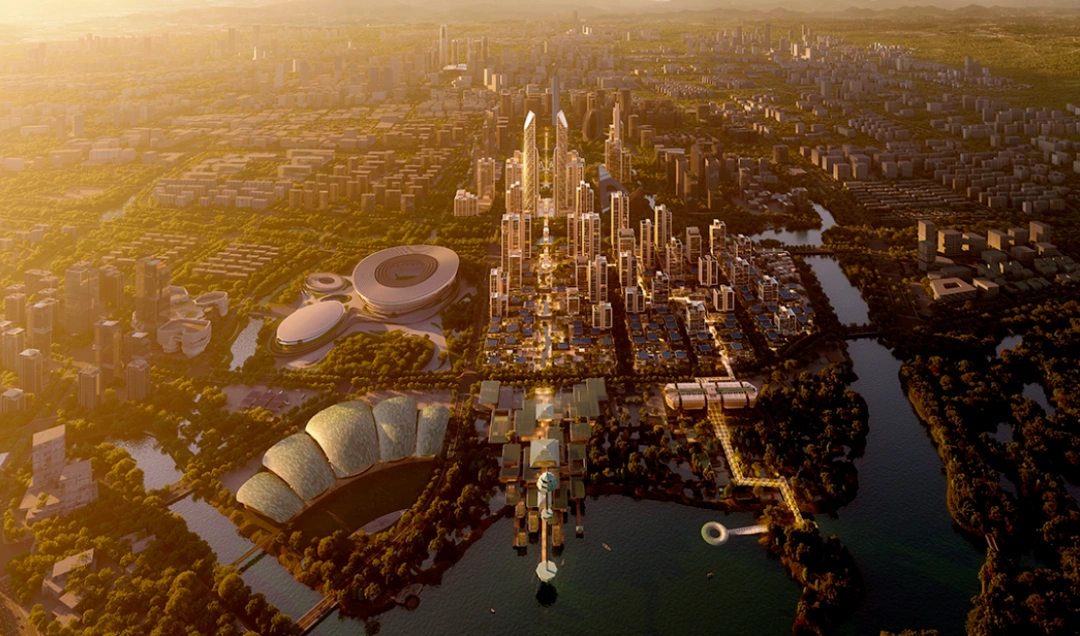 The Central Axis Design Plan for the Future Sci-Tech City in Yuhang District, Hangzhou
The Central Axis Design Plan for the Future Sci-Tech City in Yuhang District, Hangzhou
Meanwhile, at the Game Science studio, located just a few dozen kilometers away, Art Director Yang Qi is fine-tuning the particle effects for the BOSS Yellow Wind Sage in Black Myth: Wukong. In Unreal Engine 5, millions of sand particles are individually computed, each carrying the aesthetic essence of the Dunhuang mural.
These two seemingly unrelated scenes actually reveal the same underlying transformation: when technological innovation reaches a critical point, incremental changes inevitably lead to a qualitative breakthrough. The rise of the Hangzhou Six Tigers is a direct reflection of this shift in the business world.
To Reach the Peak of Civilizational on the Technological Plateau
The breakthrough of Hangzhou’s tech innovation enterprises is, at its core, a multidimensional ascent on the technological plateau. Their deep exploration of open-source strategies is less a business decision and more a civilization experiment. At a time when global AI giants are building high technological walls, this Hangzhou-based company has fully open-sourced a large model with hundreds of billions of parameters, achieving key breakthroughs in Chinese semantic understanding. According to its technical white paper, the model demonstrates exceptionally high accuracy in recognizing tonal patterns in classical Chinese poetry—an achievement rooted in the team’s digital reconstruction of ancient texts. Rather than racing to catch up with GPT, they are constructing a Babel Tower for the Chinese-speaking world.
Built on a homegrown computing platform, DeepSeek’s lightweight model outperforms international models of the same scale in evaluating Chinese semantic understanding and reading comprehension tasks. A large model should not be a mere echo chamber of a single culture but a symphony of diverse civilizations—an awareness that has already become an intrinsic part of the new generation of tech enterprises.
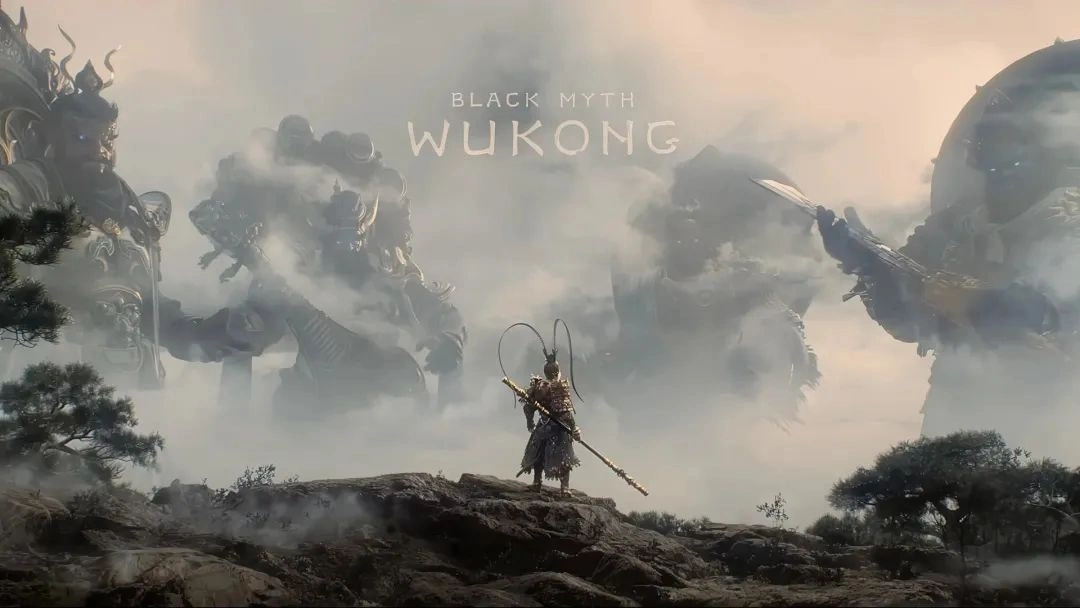 The explosive success of Black Myth: Wukong has given Chinese gamers hope for homegrown AAA games.
The explosive success of Black Myth: Wukong has given Chinese gamers hope for homegrown AAA games.
Game Science’s breakthrough carries profound symbolic significance. In the AAA gaming industry—long dominated by Western studios—they have reimagined the aesthetic framework of Journey to the West using Unreal Engine 5. In Technical Director Feng Ji’s office, replicas of ancient Chinese texts sit side by side with NVIDIA graphics cards, hinting at the dual essence of this technological revolution: harnessing world-class graphics technology to craft stunning visuals while ensuring that the Jingubang of the Yuddhajaya Buddha traces the trajectory of Eastern aesthetics.
This fusion of cultural awareness and technological transformation is reminiscent of how Nintendo infused ukiyo-e aesthetics into video games in the 1980s, pioneering a new era of artistic expression in gaming.
For example, in Black Myth: Wukong, the Game Science team reimagined the classic image of Sun Wukong, combining their redesign with Unreal Engine 5’s real-time rendering technology. This allows players to experience a dreamlike Eastern mythological world within the game. From the intricate details of the character’s fur to the interplay of light and shadow in the environments, every aspect reflects a deep understanding of Eastern aesthetics and a masterful execution of cutting-edge technology.
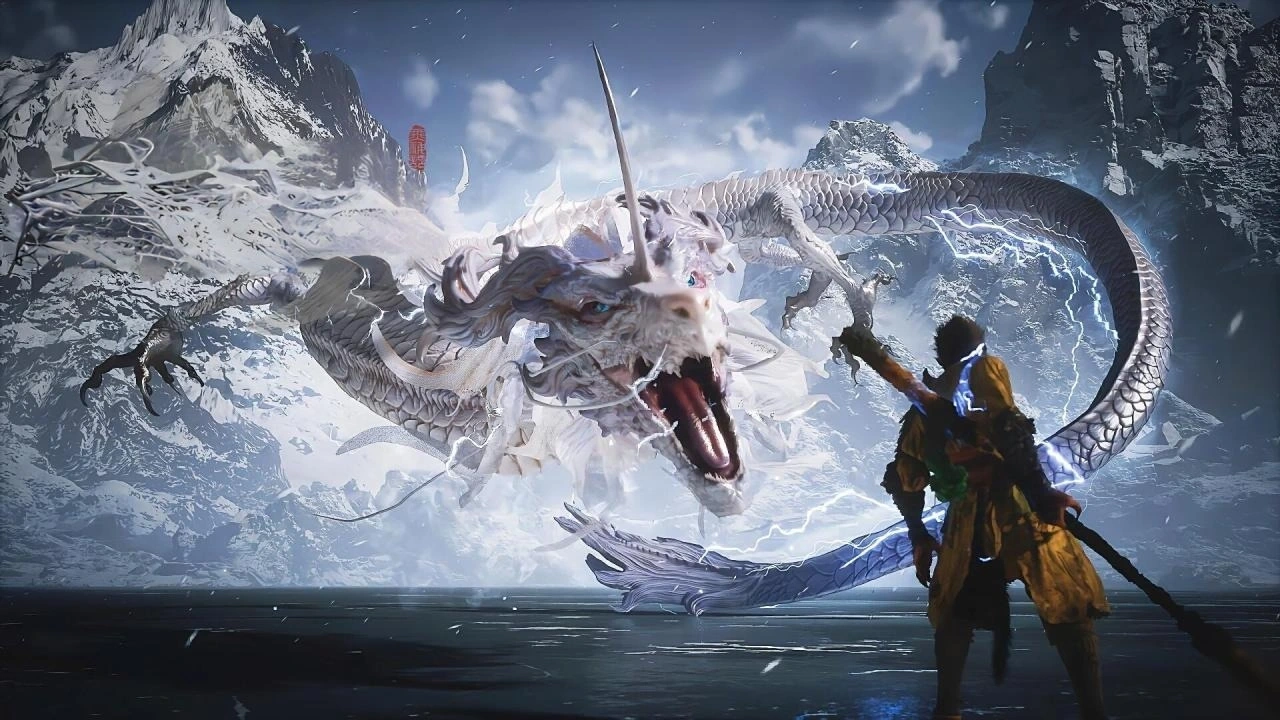
The sight of Unitree Robotics’ quadruped robots strolling across the Broken Bridge of West Lake reveals another dimension of innovation. While Boston Dynamics is still fine-tuning hydraulic systems in the lab, these Hangzhou engineers have already sent their robots into the tea fields of Huangshan, using LiDAR to map the growth patterns of ancient tea trees that have stood for millennia. Chinese tech companies should not always race on tracks defined by Silicon Valley; instead, they must find their starting lines amidst the misty landscapes of Jiangnan.
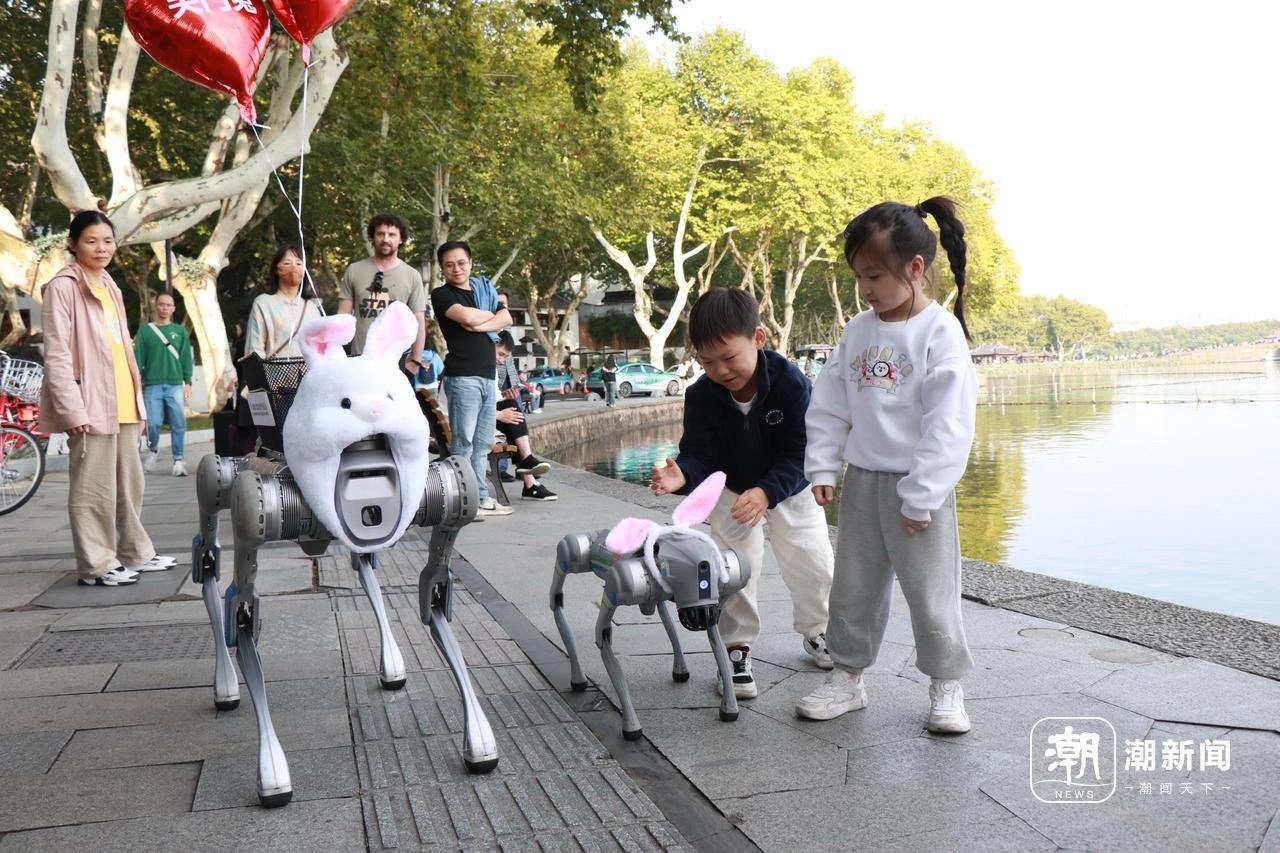
Founder Wang Xingxing embodies the theory of “scenario-native innovation,” firmly believing that the close integration of technological innovation and market demand is the key to a company’s success. In the fields nurtured by both technology and nature, Unitree Robotics’ robots are not merely cold, mechanical devices—they are guardians of the earth and cultivators of life.
Imagine such a Jiangnan scene being brought to life by Unitree Robotics: as the morning dew still glistens, the robots begin their daily work. Their “eyes”—high-precision sensors—gently scan the stems and leaves of crops, recording every subtle change in growth. Traces of pests and diseases cannot escape detection, and soil moisture is measured with precision. These data points, like the whispered secrets of the earth, are collected by the robots and relayed to farmers far away. When the planting season arrives, these robots transform into messengers of hope, carrying seeds of life along pre-mapped routes, following the contours of the land to sow them gently into the soil.
An Eastern Response to the Geography of Innovation
Looking back at the rise of Silicon Valley in the 1970s, one can find striking temporal and spatial parallels with today’s Hangzhou. The technological spillover from Shockley Semiconductor Laboratory led to the creation of Fairchild Semiconductor and the entire integrated circuit industry. Similarly, the technological diffusion within the Alibaba ecosystem has fostered the emergence of new innovations in fields such as cloud computing and large AI models.
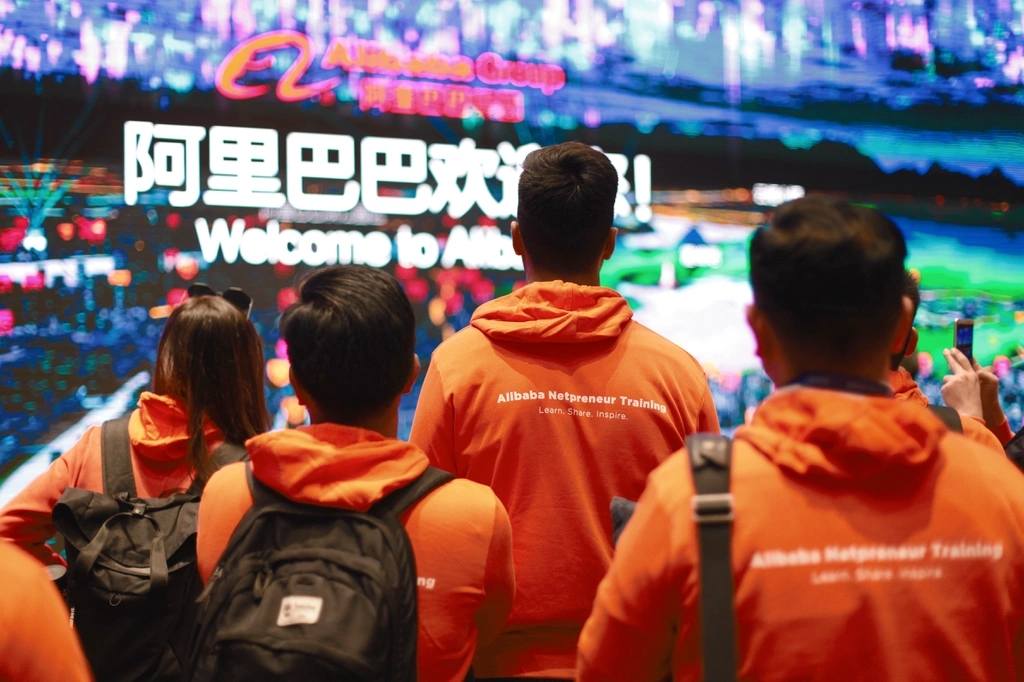 Alibaba’s Global Innovation and Development Initiative has provided training for thousands of entrepreneurs worldwide in recent years.
Alibaba’s Global Innovation and Development Initiative has provided training for thousands of entrepreneurs worldwide in recent years.
This “maternal fission” style of innovation inheritance in Hangzhou reflects a stronger sense of cultural consciousness—entrepreneurs here are no longer content with merely being technology importers; they aspire to become interpreters of civilization.
The transformation of Germany’s Ruhr region offers a valuable reference. Once an industrial rust belt, it reinvented itself by converting steel mills into digital innovation hubs, achieving a metamorphosis from “coal to code.” Hangzhou’s “Heavenly Silicon Valley” initiative clearly draws inspiration from such experiences, yet it infuses a unique Eastern governance philosophy.
Yuhang District’s “Innovation Rainforest” policy doesn’t mirror Silicon Valley’s laissez-faire approach, nor does it replicate Shenzhen’s intensive industrial planning. Instead, by establishing innovation hubs like the Zhijiang Lab and Westlake University, it has built a deeply integrated ecosystem of industry, academia, and research. The cultivation of this innovative soil is backed by data, demonstrating its effectiveness.
In 2023, Hangzhou’s total R&D expenditure intensity reached 3.92%, achieving domestic substitution for 38 key technologies and securing 20 National Science and Technology Awards. For three consecutive years, the city has ranked 14th among the world’s top 100 technology clusters.
More importantly, these investments exhibit a distinct Pasteur’s Quadrant characteristic—most research projects hold both fundamental scientific value and strong commercial application potential. As one tech analyst noted, “Hangzhou is rewriting the geography of innovation, proving that a rich cultural heritage and cutting-edge technology can thrive together.”
A Navigator’s Map for the New Age of Exploration
In a rooftop café in Binjiang District, gatherings of Hangzhou’s tech innovators often spark intellectual collisions. Some interpret agile development through the lens of classical philosophy, while others draw on ancient craftsmanship texts to explain the philosophy of hardware iteration. This fusion of cultural heritage and technological thinking has given rise to a unique methodology of innovation.
DeepSeek’s breakthrough in model architecture is particularly representative. While the global AI race fixates on ever-larger models with hundreds of billions of parameters, they have taken a different approach—developing a modular expert system that leverages smaller, composable models to achieve peak efficiency in specific scenarios.
This leveraging minimal force for maximum impact philosophy aligns with Alibaba Cloud founder Wang Jian’s vision of “computing power democratization,” yet it distinctly embodies Eastern wisdom. Much like traditional artisans who transform ordinary materials into exquisite crafts through meticulous, multi-step processes, true technological mastery is revealed in the finest details.
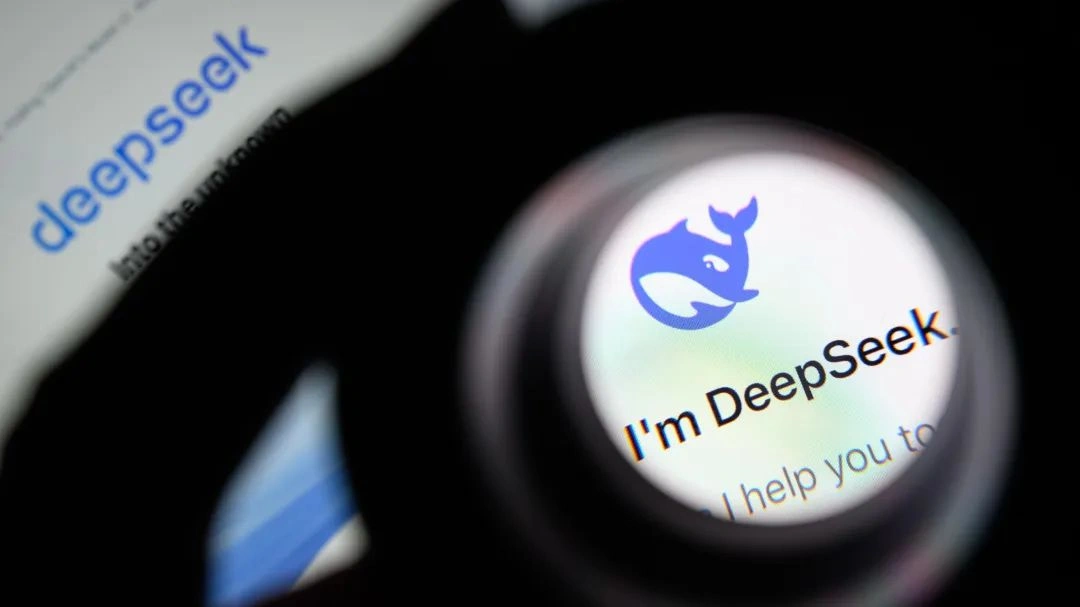
In medical imaging diagnostics, DeepSeek’s modular expert system enhances accuracy and efficiency by combining specialized small models to analyze disease-specific imaging features with precision. These small models function like dedicated experts, each specializing in the characteristics of a particular disease. Working collaboratively, they meticulously examine every detail of medical images from a microscopic perspective, ensuring a more refined and insightful analysis.
This characteristic becomes even more pronounced in business strategy. Unitree has demonstrated the ability to drastically reduce the cost of robotics, yet unlike previous industry players who rushed to find quick commercialization avenues and expand blindly, they see their products as a means to drive technological progress. Instead of prioritizing short-term monetization, they are exploring a dual-engine approach—balancing cost efficiency with technological advancement—on the path toward AGI.
The logic behind these choices differs from Silicon Valley’s rapid iteration and capital-driven model, which prioritizes technology regardless of cost. It also contrasts with the past tendency of many Chinese companies to rush commercialization. As industry analysts have noted, The new generation of Chinese tech leaders is forging a third innovation paradigm—one that is neither purely market-driven nor purely technology-worshipping, but instead seeks a strategic foothold within the dialogue of civilizations.”
Clues for the Future Hidden in the Folds of History
Expanding the perspective to the history of industrial revolutions reveals the deeper significance of the “Hangzhou Phenomenon.” The cotton mill owners of 19th-century Manchester could not have foreseen that the roar of their steam engines would usher in the railway era. Likewise, the automotive engineers of 20th-century Detroit did not anticipate that the assembly line revolution would reshape human civilization. Today, Hangzhou’s tech innovation cluster may well be standing at a similar historical inflection point.
Research by experts in the history of technology at Cambridge University reveals that truly world-changing technological innovations often arise from the creative recombination of mature technologies. Game Science’s revival of Eastern mythology through Unreal Engine 5 and Unitree’s integration of robotics with agricultural applications exemplify the essence of recombinant innovation.
Meanwhile, DeepSeek’s breakthroughs in large Chinese language models evoke comparisons to the transformative impact of Gutenberg’s printing press on the dissemination of traditional texts. When the language of technology deeply merges with the mother tongue of civilization, it sparks a shift in cognitive dimensions. The energy of this transformation is already beginning to surface at a micro level.
Recent research from relevant labs at Zhejiang University has found that employees at Hangzhou’s tech innovation enterprises exhibit a dual-cognitive ability in both culture and technology that is significantly higher than the national average. They are not only skilled in writing complex algorithms using professional programming languages but can also discuss engineering wisdom from ancient texts during their leisure time. This unique cognitive structure may well be the deep advantage behind China’s technological innovation.
Standing at the archaeological ruins of Liangzhu City (a cluster of Neolithic sites), the sound of ancient ancestors polishing jade artifacts five thousand years ago seems to converge with the hum of server clusters in Yunqi Tech Town, bridging time and space. This cross-millennial technological dialogue reveals the essence of the “Hangzhou Six Tigers” phenomenon: they are not simply chasing the waves of technology; rather, in the collision of digital civilization and Eastern wisdom, they are seeking a third space to house the human spirit.
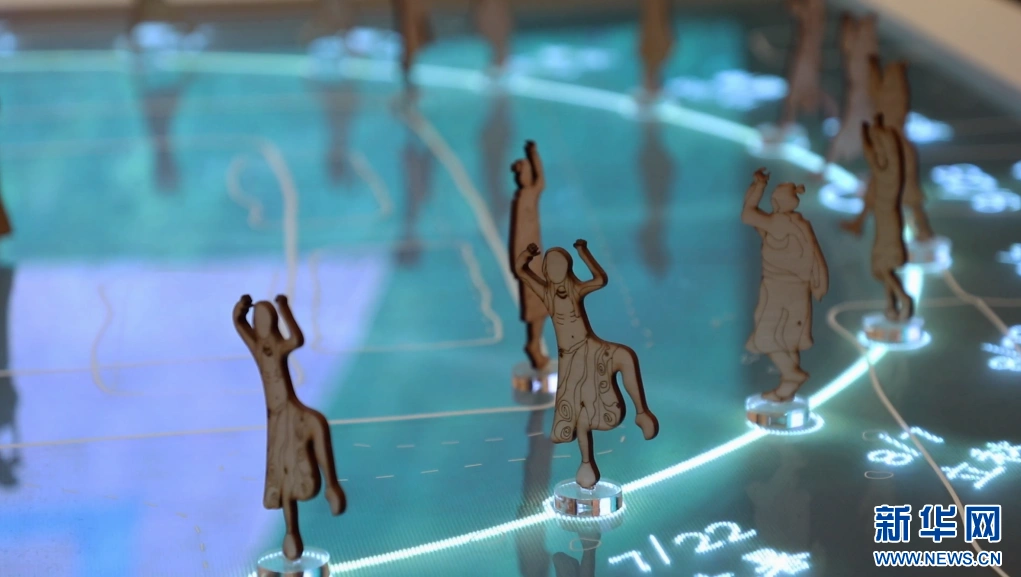 The Digital Intelligence Installations at the Liangzhu Museum
The Digital Intelligence Installations at the Liangzhu Museum
When the head of Alibaba’s Damo Academy predicted that “the next major technological breakthrough might emerge from Hangzhou,” he was perhaps hinting at a shift in the forces of civilization. From the precision components in Unitree robots’ joints to the language processing technologies in DeepSeek’s models, these technological elements are collectively weaving a new map of civilization. On this map, traditional architecture engages in a dialogue with modern tech parks from across time, the textures of traditional craftsmanship seek mathematical expression through high-performance computing, and classical aesthetics are transformed into the narrative syntax of augmented reality.
Historian Arnold Toynbee once asserted, “The 19th century was the century of the British, the 20th century was the century of the Americans, and the 21st century will be the century of the Chinese.” Yet, the tech entrepreneurs of Hangzhou have offered a more nuanced answer—they are not competing for “whose century it is,” but rather crafting a new era where technology and civilization coexist. In this era, the flying eaves of traditional architecture and the signals of modern communication will together define the meaning of progress. And the world will ultimately understand: the most profound innovation is always the creative transformation of civilization’s genetic code.
Editor: Chang Zhangjin



